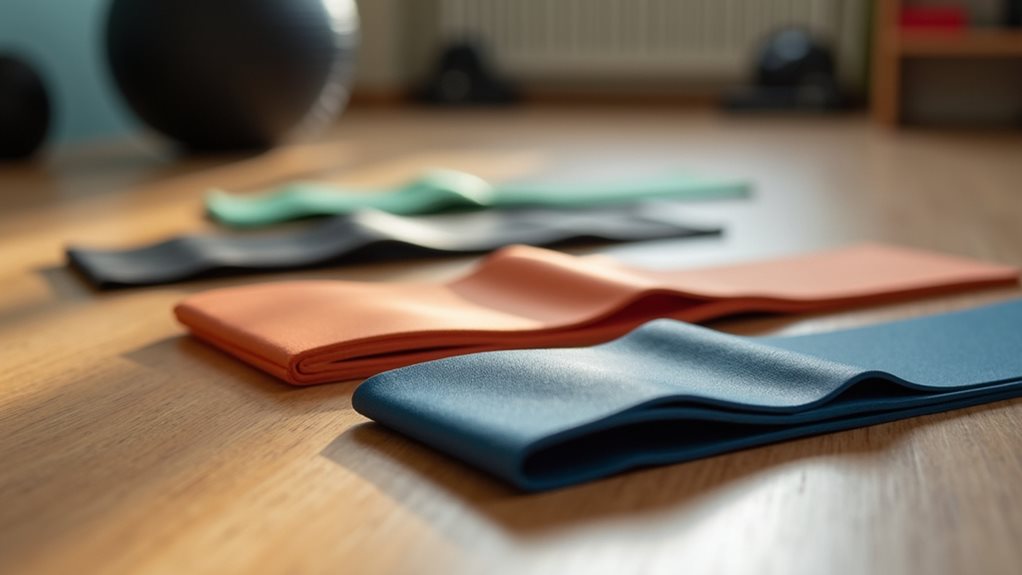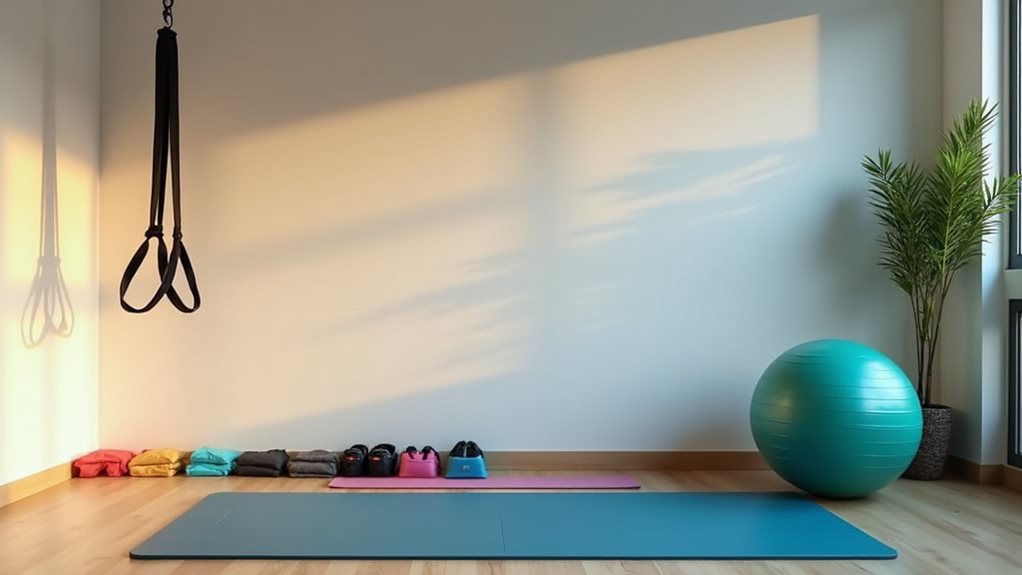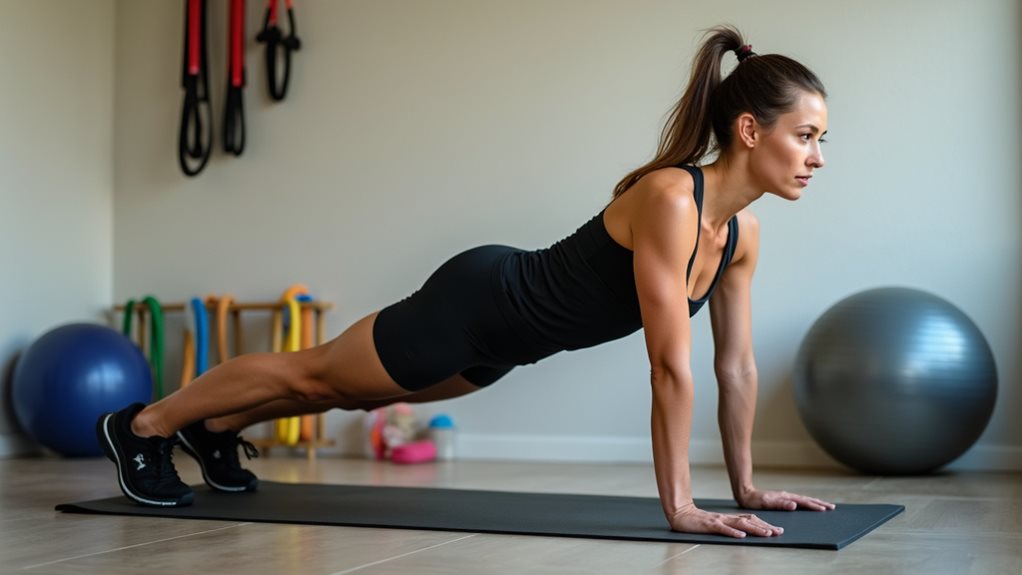5 Low Impact Exercises That Build Serious Muscle After 45
You don't need to destroy your joints to maintain muscle as you age. After 45, your body craves smarter, gentler approaches to strength training that still deliver impressive results. Many fitness enthusiasts mistakenly believe high-impact exercises are the only path to serious muscle growth, but that's simply not true. These five low-impact methods can transform your physique while protecting your hard-earned mobility—a vital balance that becomes increasingly important with each passing year.
Resistance Band Training: High Tension Without Joint Stress

Three key advantages make resistance bands ideal for those over 45 seeking muscle maintenance.
First, they're gentler on aging joints while still providing progressive resistance throughout each movement. Unlike weights that rely on gravity, bands create tension in multiple directions, engaging stabilizing muscles often missed in traditional training.
Second, you'll appreciate their adaptability. Simply adjusting your grip position or stance instantly modifies resistance levels without switching equipment. This seamless progression helps prevent plateaus in your training.
Finally, bands excel at targeting postural muscles critical for maintaining functional strength as you age. By incorporating rotational movements and exercises that mimic daily activities, you'll build practical strength that translates to real-world mobility and independence—exactly what matters most after 45.
Water-Based Strength Workouts: Maximizing Resistance With Zero Impact
Water-based strength workouts offer two remarkable benefits for those over 45 seeking muscle maintenance without joint stress. First, water provides natural resistance in all directions, challenging muscles through full ranges of motion. Second, the buoyancy eliminates impact forces that often aggravate aging joints.
You'll find these exercises particularly effective when performed in chest-deep water, where you'll encounter approximately 80% reduced bodyweight but increased resistance to movement.
| Exercise | Benefits | Muscles Targeted |
|---|---|---|
| Water Pushes | Burns 3x more calories than land equivalents | Chest, shoulders, core |
| Aqua Squats | Eliminates knee strain while building strength | Quadriceps, glutes, hamstrings |
| Flutter Kicks | Promotes cardiovascular health during strength training | Core, hip flexors, quadriceps |
Modified Bodyweight Exercises For Mature Muscles

Bodyweight training offers exceptional benefits for people over 45 when properly modified to respect aging joints while still challenging muscles effectively.
You'll need to make strategic adjustments to traditional exercises that maintain intensity while reducing joint stress.
Elevated push-ups - Perform these against a counter, wall, or bench to decrease pressure on wrists and shoulders while still engaging chest and triceps muscles.
Chair-assisted squats - Hold onto a sturdy chair for balance as you descend, reducing knee strain while targeting quads, hamstrings, and glutes.
Modified planks - Try them from your knees or against a wall rather than full-body position to protect your lower back while strengthening core muscles.
These adaptations allow you to train consistently without aggravating existing issues, building functional strength that supports daily activities.
Maintain a neutral spine position during all bodyweight movements to distribute force evenly and protect vulnerable joints from unnecessary stress.
Slow-Tempo Training: Building Strength Through Controlled Movement
Slowing down your exercise tempo dramatically increases muscle engagement and strength development while minimizing joint strain, making it perfect for those over 45. This approach focuses on time under tension, forcing muscles to work harder through each phase of movement. Incorporating slow-tempo training helps combat age-related sarcopenia which begins after 40 and causes 3-5% muscle mass loss per decade.
| Exercise | Tempo Recommendation |
|---|---|
| Squats | 4 seconds down, 2 seconds up |
| Push-ups | 3 seconds down, 1 second hold, 3 seconds up |
| Rows | 2 seconds pull, 4 seconds release |
| Lunges | 3 seconds down, 3 seconds up |
Try incorporating this method twice weekly, starting with lighter weights than you'd normally use. You'll notice increased muscle activation and reduced momentum-based cheating, leading to better results with less risk of injury.
Isometric Holds: Gaining Muscle Without Movement

Isometric exercises paradoxically build significant muscle strength without any visible movement, making them exceptionally joint-friendly for those over 45. You're simply contracting muscles against immovable resistance, creating tension without joint stress.
Try incorporating these powerful isometric holds into your routine:
Wall sits - Position your back against a wall, lower into a seated position with thighs parallel to the floor, and hold for 30-60 seconds to strengthen quadriceps.
Plank variations - Hold a forearm or high plank position, engaging your core, shoulders, and legs simultaneously for full-body strengthening.
Glute bridge holds - Lift your hips toward the ceiling while lying on your back, creating a straight line from knees to shoulders, and maintain for 20-45 seconds.
Start with 10-second holds and gradually increase duration as your strength improves.
Frequently Asked Questions
How Quickly Can I Expect to See Results From These Exercises?
You'll notice initial strength improvements within 2-4 weeks, but visible muscle changes typically take 6-12 weeks of consistent training. Your diet and sleep quality affect these timelines markedly.
Can These Exercises Help With Age-Related Hormone Changes?
Yes, these exercises can help manage age-related hormone changes. They boost testosterone production naturally, improve insulin sensitivity, and regulate cortisol levels when you're consistent with your workout routine.
How Do These Compare to Traditional Weightlifting for Building Muscle?
Imagine Joe, 50, who switched to resistance bands from heavy barbell squats. You'll build muscle similarly to traditional weightlifting, but with less joint strain and potentially better hormone regulation as you age.
What Nutritional Changes Should Accompany These Exercise Routines?
You'll need more protein (1.2-1.6g per kg bodyweight), adequate calories, increased hydration, and essential fats. Don't skip carbs—they fuel your workouts. Consider timing nutrients around exercise sessions.
Are These Exercises Effective for Reducing Sarcopenia?
Yes, these exercises are effective against sarcopenia. You'll preserve muscle mass when you combine them with protein-rich nutrition. They're specifically designed to maintain strength while protecting your aging joints.
Conclusion
You've now discovered five powerful ways to build strength without punishing your joints. Like a wise investor diversifying their portfolio, you're protecting your body while maximizing returns. By incorporating these exercises into your routine, you'll maintain muscle mass, improve mobility, and enhance your quality of life. Remember, it's never too late to invest in your strength—your future self will thank you.
